The big three automotive icons - VW’s Beetle, the original Mini, and… the Porsche 911.
In continuous production for more than 50 years, a new, eighth-generation ‘992’ version of one of the world’s most recognisable cars has arrived in Australia.
Launching initially in rear-wheel drive Carrera S (CS) and all-wheel drive Carrera 4S (C4S) variants, the headline technical upgrades are more power with lower emissions, all alloy body panels (apart from the front and rear aprons), a new eight-speed ‘PDK’ dual-clutch transmission, a ‘Wet Mode’ driving program that supports the driver in the rain, and availability of ‘Night Vision’ using an intelligent thermal imaging camera.
But there’s so much more to the story.
Porsche 911 2019: Carrera S
| Engine Type | Twin Turbo 6, 3.0L |
|---|---|
| Fuel Type | Premium Unleaded Petrol |
| Fuel Efficiency | 9.5L/100km (combined) |
| Seating | 4 |
| Price From | $180,950 - $208,010 |
Is there anything interesting about its design?
9 / 10
In designing a new 911 you’re effectively carrying the Porsche brand on your shoulders, and Porsche design chief Michael Mauer and his team have created a look that’s contemporary, yet unmistakably 911. Quality and attention to detail permeate every millimetre of this car.
The profile, though substantially larger, mirrors that of the 1963 ‘901’ original, with the car’s rear-engine layout a key driver in terms of stance and overall proportion.
First, the front and rear axles have been lengthened (45mm fr - 44mm rr) without any change to the wheelbase, so the car looks broader than ever before.
And for the time being, there’s no such thing as a ‘wide body’. In previous generations of the 911 successive iterations (AWD C4S, Turbo and GT versions) have offered wider bodies, particularly at the rear. But the CS is as wide at the haunches as the C4S.
One of the key external changes is a single LED light bar across the back of the car; a design signature across all current Porsche models. And I for one, love the old school typefaces used for the brand and model badgework.
Another shift is the move to staggered rims on the mainstream Carrera models, with 20-inch alloys up front and 21s at the rear, while the pop-up rear spoiler is a new design incorporating a large slice of the rear decklid and able to raise all the way to a full air-brake position.
.jpg)
The drag coefficient is a very respectable 0.29, and car-spotters will be pleased to know the RWD CS sports black louvers in the rear grille, while the AWD C4S swaps that out for chrome finish.
At the front, a recessed channel at the top of the bonnet (front boot lid) is a tip of the hat to early 911 generations, the headlights look the same as the out-going model but they’re LED (four types offered), and electric pop-out door handles are flush fit.
Inside, the dash design will be immediately familiar to early 911 owners. Parallel horizontal lines define its upper and lower edges, with a sleek 10.9-inch multimedia screen neatly integrated in the centre, and five toggle style-buttons underneath facilitating the switch between key functions.
The instrument display allows for a classic 911 five dial arrangement, or multiple other layouts to be configured across two 7.0-inch “freeform” screens sitting either side of a fixed analogue tachometer in the centre. It’s beautifully executed.
The steering wheel is new, with a drive mode dial sprouting from the four o’clock position on ‘Sport Chrono’ equipped cars, and marginally lighter redesigned seats trimmed in partial leather look as good as they feel (especially with the standard houndstooth-style cloth inserts).
How practical is the space inside?
7 / 10
So, there’s practicality, and then there’s sports car practicality. The latter balances all the smile-inducing dynamic ability you’d expect, with space for luggage and the stuff of everyday life, on a sliding scale from pathetic to liveable.
The 911’s needle is bouncing up against the liveable end of the dial because it’s actually a four-seater, with more than toothbrush and undies cargo capacity.
Yes, it’s a ‘2+2’ with the back seats best for kids or very occasional and short-term adult accommodation. But talk to a 911 owner and despite the limited rear legroom they’ll tell you about dropping the kids off at pre-school, or that time they had to take friends home after a party. Those extra spots are incredibly handy.
As well as that, the rear backrests flip forward to create a broad storage platform, supplementing the 132-litre (front) boot.
.jpg)
Generous boot dimensions mean it’s big enough to swallow a weekend-for-two’s worth of soft bags, or even small hard suitcases, not to mention a modest grocery shop if the need arises.
In the cabin, increased interior dimensions mean front seat occupants are provided with 12mm of extra headroom despite the car growing only 4.0mm taller overall. Part of that trick is the front seats being mounted 5.0mm lower and the cushions being slightly thinner. There’s heaps of room.
.jpg)
Day-to-day stuff includes a fixed cupholder at the bottom of the centre console, and a pop-out device at the end of the dash on the passenger side. Door pockets are slim, but they’re there, and will accept small water bottles laid on their side.
A medium-size glove box is a welcome addition, as are multiple connectivity/power options including two USB ports in a small console storage box, and a 12-volt outlet in the passenger footwell. There are also clothes hooks on the front seat backrests and on the B-pillars.

Does it represent good value for the price? What features does it come with?
8 / 10
The new 911 is offered initially in rear-wheel drive Carrera S, and all-wheel drive Carrera 4S versions with a new eight-speed ‘PDK’ dual-clutch transmission only. Pricing for soft top cabriolet variants has been set with arrival timing to be confirmed.
Base ‘non S’ Carrera models, and the option of a seven-speed manual gearbox an all models will be available later in 2019.
Launch pricing, before on-road costs, ranges from an rrp of $265,000 for the Carrera S Coupe, through $286,500 for the Carrera S Cabriolet, on to $281,800 for the Carrera 4S Coupe, right up to $302,600 for the Carrera 4S Cabriolet. So, very much the premium sports car experience, then.
And despite the rarefied air the 911 flies in there’s some serious competition in the same space, although they all circulate at a slightly higher financial altitude.
.jpg)
In ascending order the key competitive set includes, the BMW M6 ($292,600), Jaguar F-Type V8 SVR AWD ($295,578), Nissan GT-R Nismo ($299,000), Merc-AMG GT S ($301,129), McLaren 540C ($325,000), and if you’re willing to cough up a few extra bucks a month, the entry-level Audi R8 ($367,000).
And aside from the new 911’s comprehensive safety and performance packages, which we’ll cover in later sections, the standard features list is an impressive roll-call.
It kicks off with partial leather trim, complete with chequered flag style cloth inserts, over heated 14-way electrically-adjustable sports seats (with memory package), a leather-trimmed sports steering wheel, dual-zone climate control air conditioning, ‘Porsche Communication Management’ (audio, navigation, communication and assistance systems), 12-speaker Bose Surround Sound-audio (including digital radio), Apple CarPlay (no Android Auto), keyless entry and start, rain-sensing wipers, LED auto headlights, the characteristic ‘4-point’ LED daytime running lights plus LED tail-lights, the ‘Carrera S’ alloy wheels, active cruise control, the 10.9-inch multimedia screen, and twin 7.0-inch digital instrument screens.
.jpg)
The options list is also long. For example, ‘Night Vision Assist’ using an intelligent thermal imaging camera to bring the darkness to light is a $4900 extra, and a Burmester ‘High-End Surround Sound System’ will set you back $6700.
Available standard colours are white, black, red and yellow, with optional metallics covering white, black, grey, mid-blue, dark-blue, dark-grey, silver and a deep green. ‘Special’ optional colours include a full-bodied red, and soft grey, as well as ‘70s-inspired orange, close to aqua blue and lime green. And I’m sure if you really wanted it, Porsche would finish your 911 in pink, brown, or gold.
What are the key stats for the engine and transmission?
9 / 10
The 911’s rear-mounted, all-alloy 3.0-litre, twin-turbo flat six-cylinder engine now features high-pressure piezo injectors and bigger turbos for more power (+22kW) and torque (+30Nm), with outputs reading 331kW (444 horsepower) at 6500rpm and 530Nm from 2300-5000rpm.
Not only are the turbos bigger, they’re now mirrored and rotate in opposite directions, where they were previously identical and spinning the same way. It’s all about balance and evening out charge pressure.
The turbo wastegate valves are now operated by electric stepper motors rather than vacuum for faster pressure control, with maximum boost set at 1.2bar.
.jpg)
Porsche’s ‘VarioCam Plus’ variable valve timing and lift system, operating on the intake and outlet side cams and the intake valves, is now able to de-throttle the engine under partial load to save fuel.
A new eight-speed ‘PDK’ dual-clutch transmission packs a completely revised gear set, and the final drive ratio is longer. Maximum speed (a lazy 308km/h in the CS) is achieved in sixth gear.
The front diff in the AWD C4S is now water-cooled for improved durability, with the map-controlled multi-plate clutch able to deliver a maximum 50:50 front to rear variable torque split, although Porsche says that would only ever happen on snow and ice.
How much fuel does it consume?
8 / 10
Of course, Porsche claims improved fuel economy and lower emissions to go along with the 911’s boosted performance.
Stated fuel economy for the combined (ADR 81/02 - urban, extra-urban) cycle is 9.5L/100km in the CS, and 9.6L/100km in the C4S. Hardly frugal, but not bad for cars with such huge performance potential.
CO2 emissions are rated at 216g/km for the CS and 219g/km for the C4S, and the standard auto stop-start function is relatively subtle.
Minimum fuel requirement is 98 RON premium unleaded. You’ll need 64 litres of it to fill the CS’s tank, and 67 litres to brim the C4S.
Warranty & Safety Rating
What safety equipment is fitted? What safety rating?
8 / 10
Although the new 911 hasn’t been given a safety rating by ANCAP or Euro NCAP, you could argue its exceptional dynamic ability represents one giant, five-star safety feature. But specific active techology includes ABS, BA, forward collision warning, lane change assist, stability and traction control, and AEB (operating up to 85km/h).
You’ll also pick up a reversing camera, ‘Parking Distance Control’ (front and rear) and a tyre pressure monitoring system.
The standard ‘Wet Mode’ uses sensors in the wheel arches to pick up the sound of water splashing off the tyres. It then preconditions the brakes and other control systems as it warns the driver, who can then push a button or use the rotary dial on the steering wheel (‘Sport Chrono’ package) to change modes.
.jpg)
Once activated, Wet Mode connects ‘Porsche Stability Management’ (PSM), ‘Porsche Traction Management’ (PTM), the car’s adjustable aerodynamics, and the ‘Porsche Torque Vectoring (PTV) Plus’ system, to set the car up for best possible stability.
At 90km/h and above, the rear spoiler goes to its "maximum downforce" position, the engine cooling flaps open, the accelerator pedal response is flattened off and Sport mode can’t activated. Read all about how it feels in the ‘What’s it like to drive?’ section.
But if all that fails to side-step a crash the airbag count runs to six (dual front, dual front side and dual thorax). And both rear seat positions incorporate top tether and ISOFIX anchors for child seat/baby capsule location.
What does it cost to own? What warranty is offered?
7 / 10
The 911 is covered by Porsche’s three year/unlimited km warranty, with paint covered for the same period, and a 12-year (unlimited km) anti-corrosion warranty also included. Certainly off the mainstream pace, but possibly modified by the number if kays a 911 is likely to travel over time.
Porsche Roadside Assist provides 24/7/365 coverage for the life of the warranty, and after the warranty runs out is renewed for 12 months every time the vehicle is serviced at an authorised Porsche dealer, and the main service interval is 12 months/15,000km.
No capped price servicing is available, with final costs determined at the dealer level (in line with variable labour costs by state/territory).
What's it like to drive?
10 / 10
The local 911 launch program took in open rural roads in McLaren Vale (south-east of Adelaide), South Australia and The Bend Motorsport Park, a slick new facility privately developed from Mitsubishi Australia’s former proving ground at Tailem Bend.
Over two days we were able to push the CS and C4S coupe as hard as we dared, and let’s get it out of the way up front, the new 911 is fast.
With the optional Sport Chrono package the roughly 1.5-tonne C4S will accelerate from 0-100kmh in just 3.4 sec. Even in its ‘slowest’ non-Chrono CS form that number only drops by three tenths.
On top of these performance figures it also manages to magic up an engine and exhaust sound that’s a beat-for-beat match for naturally aspirated 911 flat sixes of old. There’s no synthetic skulduggery here, just skilful manipulation of the exhaust system, getting a pitch-perfect amount of gas past the turbos into grateful ear drums.
The 3.0-litre flat six produces its maximum 530Nm of torque from 2300-5000rpm, with peak power (331kW) taking over at 6500rpm. The fat mid-range pushes you firmly back in your seat with a simple squeeze of the right-hand pedal, and the engine’s revvy nature makes the temptation to visit the 7500rpm rev ceiling almost irresistible.
Porsche knows its way around a dual-clutch transmission, and the new eight-speed PDK delivers rapid fire, positive shifts up and down the ratios, with the slender alloy wheel-mounted paddles adding to the immediacy and fun.
.jpg)
A big question is, in its creep from small and light to bigger and heavier has the 911 lost its ability to form a direct and intimate relationship with its driver. After all, thanks to added safety and performance hardware this car’s a full half tonne heavier than the ‘901’ original. The answer is an emphatic no.
The strut front, multi-link rear suspension set-up continues, with active dampers (PASM) and active anti-roll bars standard. In Comfort mode the 911 rides incredibly well, even over the coarse chip rural surfaces covered on the launch. Despite monster Goodyear Eagle F1 high-performance rubber (245/35 20 fr - 305/30 21 rr) general noise, vibration and harshness levels are impressively low.
But switch up into the more dynamic modes and you’ll really start to bond with the new 911. The slightly quicker electrically-assisted steering points beautifully, with the variable assistance ramping up in superbly linear fashion.
I remember widespread hand-wringing and gnashing of teeth when Porsche moved the 911 to electric steering. No need to have worried, road feel is even more present in this latest gen version.
Hot lapping The Bend’s 4.95km International Circuit (one of four layouts available) amplified the new car’s abilities, not to mention its ergonomic excellence.
.jpg)
‘Porsche Torque Vectoring Plus’ (PTV Plus) packs in an electronically regulated rear diff lock with fully variable torque distribution and the car opens up a clear conversation as the limits of adhesion arrive.
Basically, the new 911 turns go-fast wannabes into track-day super heroes, its every movement felt immediately through the fingertips and seat of the pants. Speaking of which, the standard sports front seats are brilliant, and the new design steering wheel is perfect.
It remains balanced and predictable at speeds that would have the constabulary locking the cell door and throwing away the key, steady and easily steerable with the throttle through hold-your-breath quick corners.
There's precious little difference between the CS and C4S. Yes, the AWD car grips even harder at the front end, but the rear-drive car feels lighter in the nose and that bit more responsive to steering input. Really, there's not a struck match in it.
.jpg)
Then there’s the brakes, and oh how good they are. A ceramic composite brake package (complete with black calipers) is a $20,500 option. I’d advise buying a Yaris SX as a weekday runabout instead because the standard stoppers are brilliant.
Huge ventilated cast iron rotors (350mm front and rear) are clamped by red six-piston monobloc calipers at the front and four piston units at the rear. Despite lap after hot lap (tailing various tame racing drivers) the left pedal lost none its response or effectiveness. Amazing.
We also got to play with Wet Mode through a simple figure eight exercise on a soaking skid pan, and it makes a distinct difference without shutting down the fun. Yes, the throttle’s softer, but the engine still revs freely, the car remaining stable and predictable in what equated to torrential conditions.
Verdict
In designing a modern sports car, who’d hang the engine over the back wheels? This layout just shouldn’t work in the way it does, but Porsche has continued to evolve and hone the 911 to an incredibly fine point. It’s a simply superb sports car experience.
If it were our money, we'd go for the Carrera S coupe. Entry-price dollars with minimal penalty in terms of dynamics relative to the C4S.
Porsche 911 or Merc-AMG GT? Tell us what you think in the comments section below.
Note: CarsGuide attended this event as a guest of the manufacturer, with travel and meals provided.

.jpg)
.jpg)
.jpg)
.jpg)
.jpg)
.jpg)
.jpg)
.jpg)







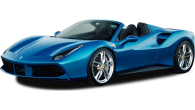
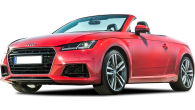


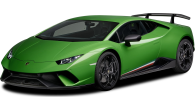
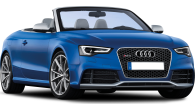



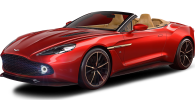

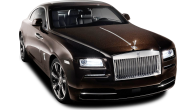
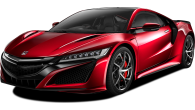

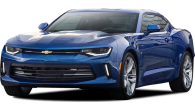




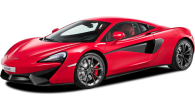
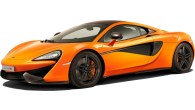
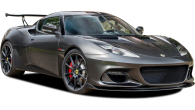
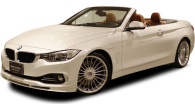


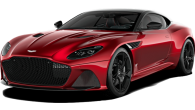

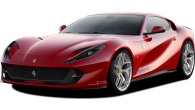
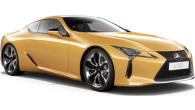

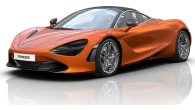


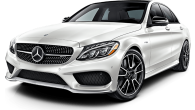


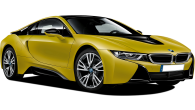
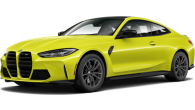

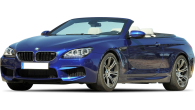
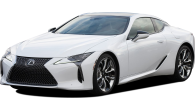

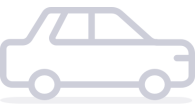

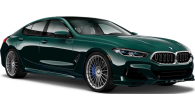
.jpg)
.jpg)


.jpg)

